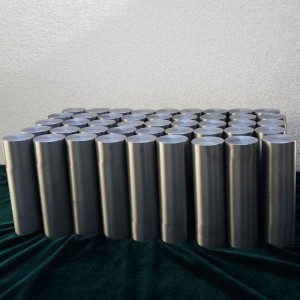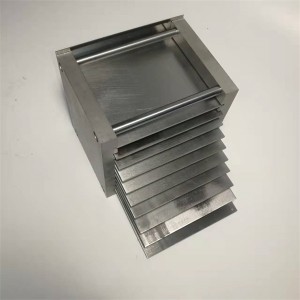M2 M3 tantalum bolts and nuts DIN931 D933 DIN912 DIN934
When it comes to screws and fasteners, "DIN" stands for "Deutsches Institut für Normung," which translates to "German Institute for Standardization." The term "DIN" is used to refer to the standards developed by this organization that are widely recognized and used in industry and engineering. When you see a fastener with a "DIN" label, it means the product meets specific standards set by the German Institute for Standardization.
These standards cover all aspects of fasteners, including dimensions, materials and mechanical properties, and are used to ensure consistency and quality in the production and use of screws, bolts and other fastening components.

DIN 934 is the German standard for hexagonal nuts. This specification outlines the dimensions, materials and mechanical properties of coarse thread hex nuts. The standard covers a range of sizes from M1.6 to M64.
Some key aspects of the DIN 934 specification include:
1. Material: The standard stipulates that nuts can be made of a variety of materials, including steel, stainless steel, brass and other non-ferrous metals.
2. Threads: This standard covers coarse threaded nuts, which are the most common thread type used in general fastening.
3. Dimensions: DIN 934 specifies the width across flats, height and pitch of hexagonal nuts for each size.
4. Mechanical properties: The standard includes requirements for the mechanical properties of the nut, such as guaranteed load, tensile strength, hardness, etc.
Overall, DIN 934 provides a comprehensive set of specifications for hexagonal nuts, ensuring that they meet the necessary requirements for a variety of industrial and mechanical applications.

The main difference between DIN and ISO nuts is the standards organization that develops and maintains these nut specifications.
DIN (Deutsches Institut für Normung) is the German standardization association and has always been the main source of industrial standards, including standards for nuts and other fasteners. The DIN standard is widely used in Germany and has also been adopted by many other countries.
ISO (International Organization for Standardization) is a global standards-setting body responsible for developing and publishing international standards. ISO standards are recognized and used worldwide and cover a wide range of products and processes, including fasteners.
In terms of nuts, DIN and ISO have their own set of standards for various types of nuts, including hex nuts, lock nuts, etc. While there may be similarities between the two sets of standards, there may also be differences in dimensions, materials and technical specifications.
It is worth noting that some DIN standards have been adopted as ISO standards, in which case the specifications are essentially the same. However, in some cases DIN and ISO standards may differ, especially in the case of specific product types or variants.
When selecting a nut for a specific application, reference must be made to the specific DIN or ISO standard to ensure that the selected nut meets the required specifications and is compatible with the intended use.

Wechat:15138768150
WhatsApp: +86 15838517324
E-mail : jiajia@forgedmoly.com











